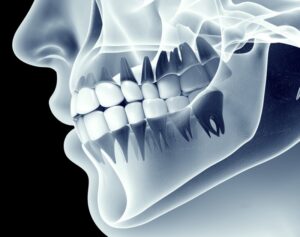Are Teeth Bones? When discussing the human body’s skeletal system, teeth often find themselves at the center of confusion. Many people wonder whether teeth are classified as bones or if they belong to a separate category altogether. The solution is more complicated than one may first believe. Teeth and bones share some similarities, yet they have distinct differences that set them apart. In this comprehensive article, we will delve into the topic and provide a thorough explanation of the relationship between teeth and bones.
1. Introduction
Teeth and bones are vital components of the human body, each contributing to specific functions necessary for survival and overall well-being. While most people recognize that teeth and bones have distinct roles, the question remains: Are teeth considered bones? To answer this, we must first understand the composition and structure of teeth and bones.
2. Understanding Teeth: Their Composition and Structure
Teeth are complex structures designed to serve various functions in the mouth, primarily aiding in the process of mastication. They are composed of different layers, each playing a crucial role in their overall function.
2.1 Enamel: The Protective Outer Layer
The outermost layer of a tooth is called enamel. Enamel is the hardest and most mineralized substance in the human body, providing a protective shield for the tooth against external forces and temperature changes. Its high mineral content, primarily composed of hydroxyapatite crystals, makes it incredibly resilient.
2.2 Dentin: The Resilient Middle Layer
Beneath the enamel lies the dentin, a dense and resilient layer that forms the bulk of the tooth’s structure. Dentin is also rich in minerals, particularly hydroxyapatite, but it is softer than enamel. This layer is responsible for supporting the enamel and transmitting sensations from the tooth’s surface to the nerves in the pulp.
2.3 Pulp: The Vital Core
At the core of the tooth lies the dental pulp, a soft and sensitive tissue that houses blood vessels, nerves, and connective tissues. The pulp plays a vital role during tooth development, providing nourishment to the growing tooth, and acts as a sensory organ, allowing us to perceive sensations like hot, cold, and pain.
2.4 Cementum: Connecting Teeth to Bone
On the root of the tooth, a thin layer of cementum covers the dentin. Cementum’s main function is to attach the tooth to the alveolar bone through a network of collagen fibers called the periodontal ligament. This connection allows for the necessary stability and support required for proper chewing and speaking.
3. Bones: A Framework for the Body
Bones serve as the solid framework of the human body, offering structural support and protection to vital organs and tissues. The skeletal system is dynamic and comprises different types of bones with unique functions.
3.1 Bone Composition and Structure
Bones are living tissues composed of a matrix of collagen fibers that provide flexibility and strength, reinforced with minerals, mostly calcium and phosphorus, which give them rigidity. This combination of collagen and minerals makes bones incredibly durable yet capable of adapting to changing pressures and stresses.
3.2 Bone Functions
The skeletal system serves multiple essential functions:
- Structural Support: Bones provide the framework for the body, giving it its shape and allowing us to stand upright.
- Protection: Bones safeguard vital organs, such as the brain, heart, and lungs, from external trauma.
- Movement: Bones work in conjunction with muscles to facilitate movement and locomotion.
- Mineral Storage: Bones store essential minerals like calcium and phosphorus, which can be released into the bloodstream when needed for other bodily functions.
- Blood Cell Production: Blood cells, such as red blood cells, white blood cells, and platelets, are created in the bone marrow.
4. Comparing Teeth and Bones
4.1 Similarities
Teeth and bones share several similarities:
- Mineral Composition: Both teeth and bones contain hydroxyapatite, a crystalline form of calcium phosphate, which contributes to their hardness and strength.
- Connective Tissues: Both teeth and bones are connected to the rest of the body through connective tissues. Teeth are anchored to the alveolar bone by the periodontal ligament, while bones are connected to muscles by tendons and to other bones by ligaments.
4.2 Differences
Despite their similarities, there are significant differences between teeth and bones:
- Location: Bones form the skeletal system, which supports the entire body, while teeth are localized within the oral cavity.
- Growth and Regeneration: Bones have the ability to grow, repair, and regenerate themselves, while teeth cannot regenerate. Once teeth are damaged or lost, they do not regrow naturally like bones.
5. Are Teeth Bones? The Definitive Answer
The question of whether teeth are considered bones can be answered with a definitive “no” from a biological standpoint. While both teeth and bones share some similarities in their composition and contain hydroxyapatite, they serve distinct purposes and develop through different processes. Teeth are ectodermal in origin, arising from the embryonic ectoderm, while bones are mesodermal, originating from the embryonic mesoderm. Moreover, the cellular makeup and structure of teeth differ from that of bones.
6. The Embryonic Origins of Teeth and Bones
To better understand the fundamental differences between teeth and bones, let us explore their embryonic origins.
Teeth: Dental development begins during the embryonic stage from the ectodermal germ layer. This process involves the interaction between neural crest cells and oral epithelium, which eventually leads to the formation of the primary teeth in infancy and the replacement of these primary teeth with permanent teeth during childhood.
Bones: Bones, on the other hand, originate from the mesodermal germ layer. During embryonic development, mesoderm cells differentiate into chondrocytes, which lay down a cartilaginous model that serves as a template for bone formation. This process is called endochondral ossification.
7. Teeth and Bones: Growth and Development
Understanding the growth and development of teeth and bones sheds light on their uniqueness and diverse characteristics.
7.1 Tooth Development
Teeth development begins before birth and follows a specific sequence. The formation of primary teeth starts during the embryonic stage, but they only begin to erupt into the mouth after birth, usually around six months of age. Throughout childhood, primary teeth are gradually replaced by permanent teeth, which continue to emerge until early adulthood, typically around the age of 21.
7.2 Bone Growth and Remodeling
Bone growth, unlike teeth, occurs throughout life. During childhood and adolescence, bones grow in size and density, supporting the overall growth of the body. This process is known as longitudinal growth and is controlled by growth plates located at the ends of long bones. Additionally, bones undergo continuous remodeling, where old bone tissue is broken down by osteoclasts and replaced with new bone tissue formed by osteoblasts. This remodeling process allows bones to adapt to mechanical stresses and repair microscopic damage, maintaining their structural integrity.
8. Dental Health vs. Bone Health
While teeth and bones differ in many aspects, their health and well-being are intertwined. Dental health and bone health are vital components of overall well-being, with each influencing the other.
Dental Health: Proper dental hygiene and regular dental check-ups are essential for maintaining healthy teeth and gums. Poor oral health can lead to various dental issues, such as tooth decay, gum disease, and tooth loss, affecting not only one’s ability to chew and speak but also overall quality of life.
Bone Health: Bone health is equally critical, especially as we age. A balanced diet rich in calcium and vitamin D, along with regular physical activity, helps maintain bone density and strength, reducing the risk of osteoporosis and fractures.
9. Teeth and Bones in Medicine and Forensics
Teeth and bones play significant roles in various medical and forensic fields, offering valuable insights and aiding in identification.
In Medicine:
- Dental X-rays help diagnose dental problems and detect diseases of the jaw and surrounding structures.
- Bone density scans (DEXA scans) assess bone health and diagnose osteoporosis and other bone-related disorders.
In Forensics:
- Dental records are commonly used for human identification, especially in cases of mass disasters or accidents where other means of identification may not be available.
- Analysis of skeletal remains can provide information about the deceased person’s age, sex, height, and potential cause of death.
10. Conclusion
In conclusion, teeth and bones, while sharing some similarities in composition and function, are distinct structures with unique roles in the human body. Teeth serve the specific purpose of breaking down food during mastication, while bones provide structural support, protect vital organs, facilitate movement, and produce blood cells. Though both are composed of hydroxyapatite and connected to other parts of the body through connective tissues, their embryonic origins and growth processes set them apart.
Thus, teeth are not classified as bones from a biological standpoint, highlighting their fascinating complexity as separate entities within the intricate framework of the human body. Understanding the distinctions between teeth and bones enhances our appreciation for the marvels of human anatomy and the interconnectedness of the body’s diverse systems, ensuring a deeper understanding of dental and skeletal health and their roles in our overall well-being.


